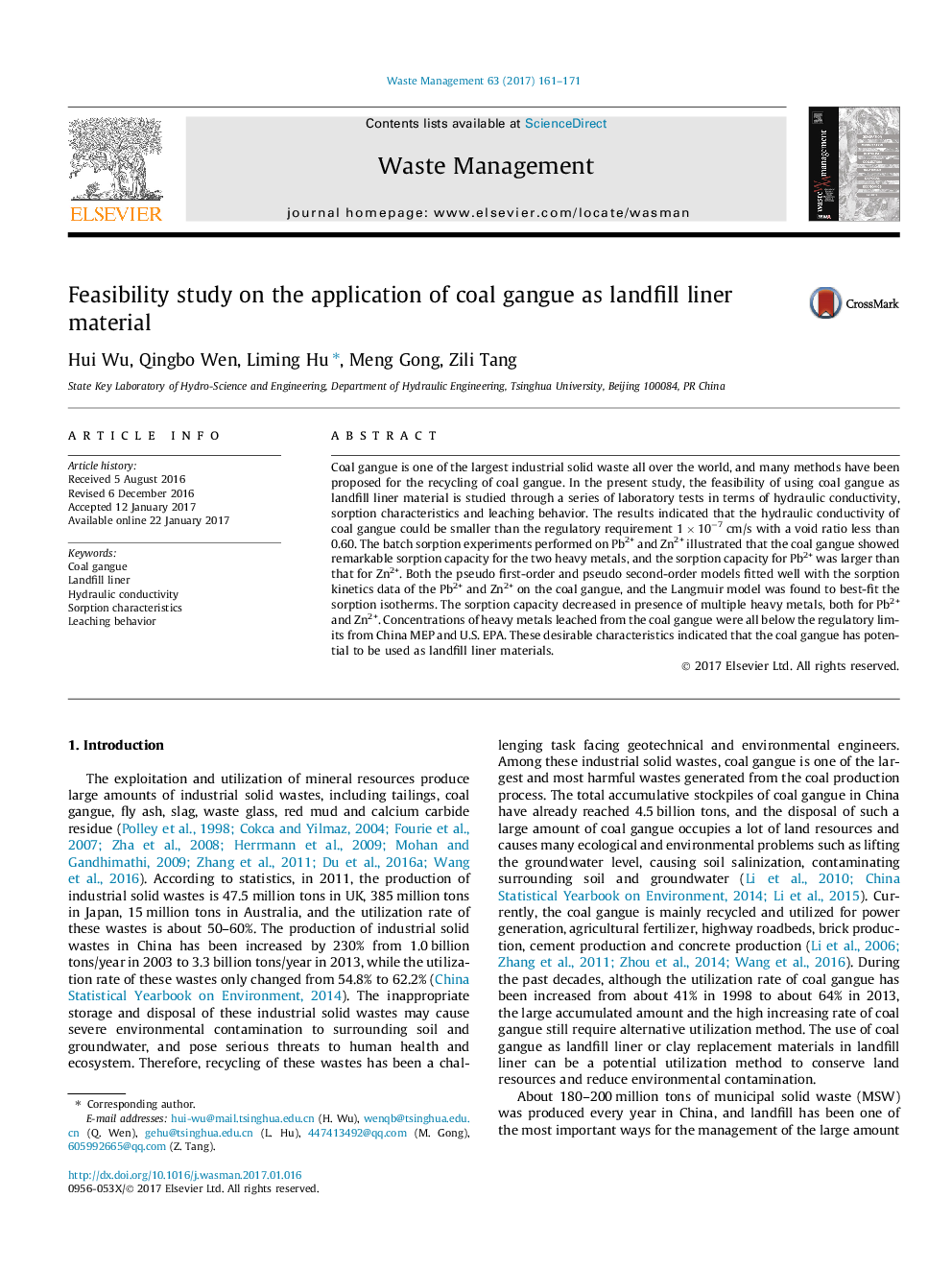| Article ID | Journal | Published Year | Pages | File Type |
|---|---|---|---|---|
| 5756861 | Waste Management | 2017 | 11 Pages |
Abstract
Coal gangue is one of the largest industrial solid waste all over the world, and many methods have been proposed for the recycling of coal gangue. In the present study, the feasibility of using coal gangue as landfill liner material is studied through a series of laboratory tests in terms of hydraulic conductivity, sorption characteristics and leaching behavior. The results indicated that the hydraulic conductivity of coal gangue could be smaller than the regulatory requirement 1Â ÃÂ 10â7Â cm/s with a void ratio less than 0.60. The batch sorption experiments performed on Pb2+ and Zn2+ illustrated that the coal gangue showed remarkable sorption capacity for the two heavy metals, and the sorption capacity for Pb2+ was larger than that for Zn2+. Both the pseudo first-order and pseudo second-order models fitted well with the sorption kinetics data of the Pb2+ and Zn2+ on the coal gangue, and the Langmuir model was found to best-fit the sorption isotherms. The sorption capacity decreased in presence of multiple heavy metals, both for Pb2+ and Zn2+. Concentrations of heavy metals leached from the coal gangue were all below the regulatory limits from China MEP and U.S. EPA. These desirable characteristics indicated that the coal gangue has potential to be used as landfill liner materials.
Related Topics
Physical Sciences and Engineering
Earth and Planetary Sciences
Geotechnical Engineering and Engineering Geology
Authors
Hui Wu, Qingbo Wen, Liming Hu, Meng Gong, Zili Tang,
